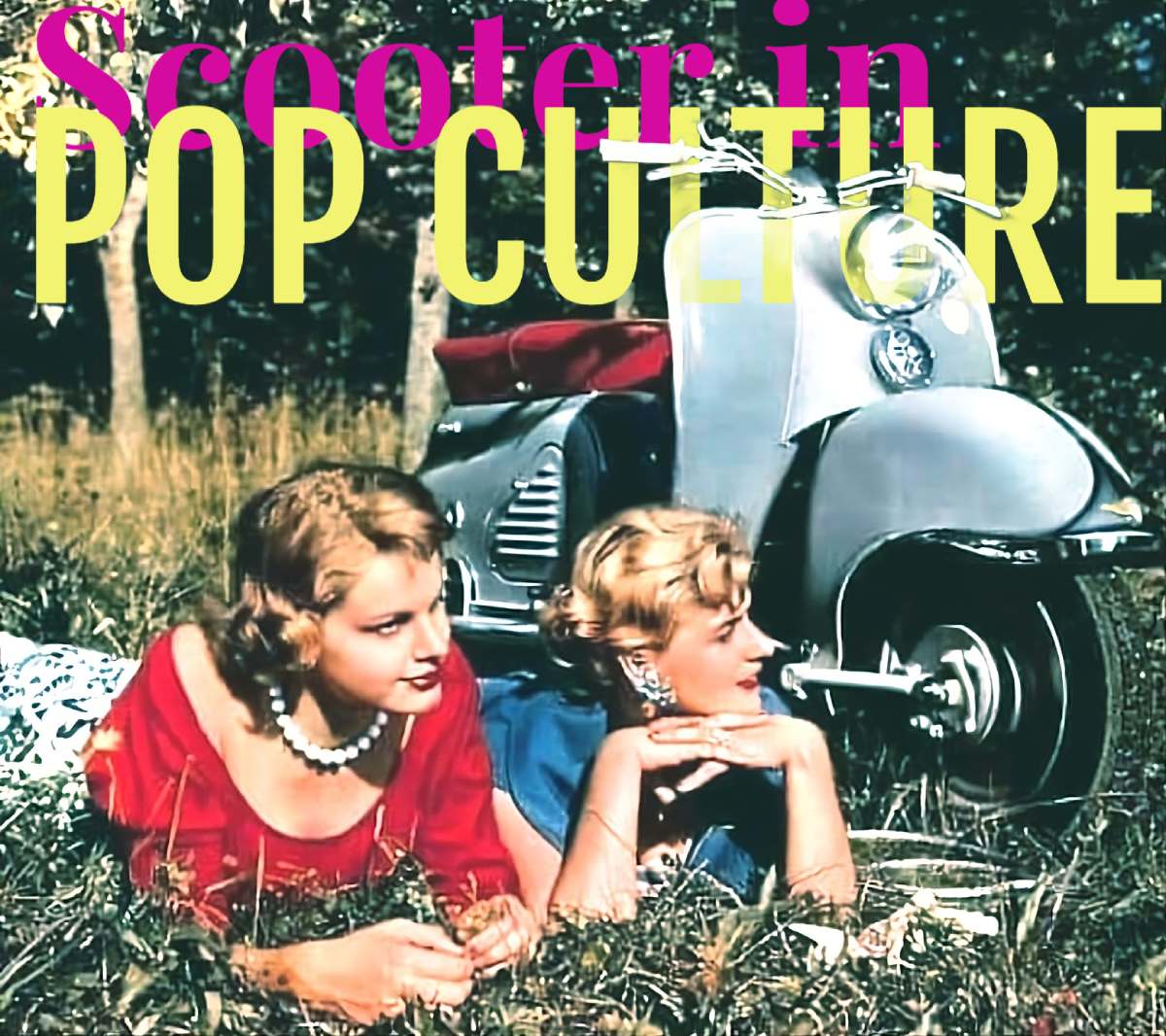- Posted on
- • Classic
Scooters in Pop Culture: How Vespas and Lambrettas Stole the Screen
- Author
-
-

- User
- Torque
- Posts by this author
- Posts by this author
-

Scooters in Pop Culture – How a Small Step-Through Stole the Silver Screen and the Streets
They’re not the fastest, the loudest, or the most powerful machines on two wheels. But with their curved fenders and friendly buzz, scooters have carved out a unique and enduring place in our collective imagination. From post-war Rome to modern Instagram feeds, the scooter has become a universal symbol of style, freedom, and effortless cool.
1. A Star is Born on the Spanish Steps
In 1953, the world’s perception of the scooter changed forever. In Roman Holiday, Audrey Hepburn hops off a Vespa 125, Gregory Peck grips the bars, and in that moment, the scooter became synonymous with freedom and romance. The bike itself had only 4.5 horsepower, but the film gave it a million. The impact was immediate: sales in the US jumped 50% the next year, and dealers ran out of chrome headlight rims. One short ride through Rome did what no advertisement could—it transformed a utilitarian commuter into a dream machine.
2. Britain Picks Up the Cue – Mods and Rockers
Jump to 1964. London's youth adopted Lambrettas and Vespas not for their engineering, but for their style. The bikes fit neatly under a Crombie coat, and a mirror-polished model parked outside a Soho club perfectly reflected your mohair suit. When The Who released Quadrophenia in 1979, the scooter was cemented as the mod flag. The film’s hero, Jimmy, rides a Lambretta Li 150 Series 3 painted in Union Jack swirls. Overnight, teenagers who had never changed a spark plug were hunting for spare wheel rims and fish-tail exhausts. Rocker leather jackets faded; mod parkas bloomed.
The Mod Icon
The scooter was more than transport; it was a rolling declaration of identity, customized with a forest of mirrors and lights, ready for a weekend rally.
3. Music Videos and Album Sleeves
The scooter's photogenic charm made it a natural for the music industry. The Jam posed beside a Vespa GS 160 on the cover of Sound Affects. Madness pushed a Lambretta through a laundrette in the video for Baggy Trousers. Even the Spice Girls strapped on helmets for the Too Much video—Girl Power on a pastel pink PX200. Each time, the message was the same: scooters look friendly, photogenic, and just cheeky enough.
4. Fashion Runways Borrow the Curve
In 1997, Vespa sent a mint-green ET4 down the catwalk for Dior’s spring show. The bike wasn't there to start engines; it was there to start outfits. A decade later, Paul Smith painted his signature stripes on a limited-run PX125 and sold all 500 units before the paint dried. Fashion editors called it “utilitarian chic,” while riders called it “a scooter I can finally match to my sneakers.”
5. Bollywood Joins the Chorus
The blockbuster Dhoom (2004) starts with high-octane stunts on a Suzuki Bandit, but its soft, romantic moment is all about a white Vespa 150. The girl sits sidesaddle, her light scarf waves in the wind, and when the credits roll, every couple walks out wishing for an open road by the sea. While Royal Enfield sales rose, so did demand for second-hand Vespas. Dealers in Mumbai reported a 30% bump in PX models the month after the film's release.
6. Anime and Street Art
The scooter's cultural infiltration extends even to animation and art. Studio Ghibli’s Kiki’s Delivery Service (1989) gives the heroine a small broom, yet background shots are full of Vespas parked outside bakeries. The bike stands for quiet daily life, a charming counterpoint to magical chaos. In real-world cities, street artists frequently stencil scooters beside coffee cups and vinyl records. The outline—round headlight, tapering rear—is so iconic it's readable even in a one-line drawing.
7. Video Games Let You Ride Without a License
Grand Theft Auto: Vice City let players leap a pastel Vespa over beachfront ramps. The game files simply called it “Faggio,” but the shape was unmistakable. Gamers who had never kicked a real engine to life learned the sound loop of a two-stroke and the wobble of 10-inch wheels on cobbles. Today, mods for Cyberpunk 2077 offer neon-lit classic scooters, proof that even dystopian future worlds crave yesterday’s curves.
8. Commercials Love the Easy Vibe
Coca-Cola, Levi’s, and Apple have all slid a scooter into thirty-second spots. The script hardly matters: open on a curved fender glinting under the morning sun, add a smiling face, and the product instantly feels lighter, more accessible. Shoot the same ad with a motorbike and the mood turns loud; shoot with a car and it turns heavy. A scooter keeps things breezy.
9. Modern Influencers Bring It Full Circle
Today’s Instagram feeds are filled with restored PX125s posed beside flat-white coffees. Hashtags like #vespavibes and #scootercore collect millions of posts. Riders pose in trench coats and loafers, helmets casually hooked on an arm. The scooter is once again a fashion extra, only now the stage is a phone screen instead of a cinema.
10. Why the Scooter Keeps Winning Screens and Hearts
So, what is the scooter's secret? Why does it remain such a potent and recurring symbol across decades and media?
- Shape Reads Fast: The round headlight, slim waist, and flat floor create a silhouette recognized in a second.
- Gender Neutral: The step-through frame lets anyone climb on in a skirt or boots, broadening its appeal.
- City Friendly: It's narrow enough to weave through traffic and slow enough for cameras to track smoothly.
- Sound Soft: The gentle two-stroke buzz is less intimidating and photographs easier than a roaring four-stroke thump.
- Cheap to Rent: Practicality rules: film crews can hire three Vespas for the price of one classic car.
11. Key Takeaway
From Audrey Hepburn's soft grin to a mod's shiny glasses, the scooter has worked for over seventy years as a tiny, happy ticket to freedom. Filmmakers, fashion designers, and kids on TikTok pick it again and again because the message is always clear: step on, look nice, and slip away for a bit. As long as cities have lanes and cameras have lenses, the curved fender will keep gliding into frame, carrying whoever sits aboard straight into the story.
